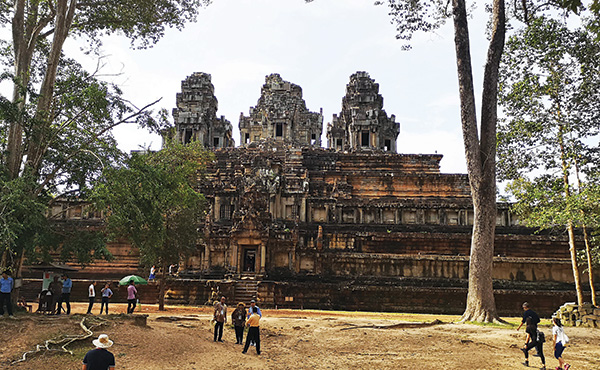 |
|
The Ta Keo Temple at Angkor, Cambodia, built about 1,000 years ago, is one of the renovation projects China has become involved in protecting.[Photo provided to China Daily] |
Mechtild Rossler, director of the UNESCO World Heritage Centre, said, "The World Heritage Centre and the Chinese authorities have been working closely on monitoring the conservation of properties inscribed on the World Heritage List."
To be inscribed on the list, sites must be recognized as being of outstanding universal value, or OUV.
But getting on the list is just the beginning. Heritage protection at national level is often affected by insufficient financial or material resources, or shortages in knowledge or capacity. Help from the international community can be important.
"In view of the many threats facing heritage, states party to the (World Heritage) Convention consider that it is incumbent on the international community as a whole to participate in the protection of cultural and natural heritage of OUV and to provide assistance to that effect on an international scale," Rossler said.
China has a series of national laws that go well beyond these international cooperation efforts.
Lee Ho Yin, head of architectural conservation programmes at the University of Hong Kong, said the country has a regulatory framework to protect both tangible and intangible cultural heritage.
The Cultural Relics Protection Law provides statutory protection for the country's cultural relics. It covers both movable and immovable tangible cultural heritage, which can range from buildings to artifacts.
The Intangible Cultural Heritage Law provides statutory protection for cultural heritage, and covers a broader spectrum.
Another piece of legislation, the Urban and Rural Planning Law of the People's Republic of China, is aimed at strengthening urban and rural planning and promoting the "integrated, harmonious and sustainable development of urban and rural society and economy".
Heritage conservation is also included in China's planning framework in conjunction with the Cultural Relics Protection Law.
The National Cultural Heritage Administration and the Ministry of Culture and Tourism recently unveiled a comprehensive conservation plan for the Great Wall.
Thirteen years in the making, the plan will be used as a guide for restoration, management of public access and academic research efforts until 2035, to preserve this unique cultural heritage attraction. The aim is to minimize intervention and restoration at the site, to maintain its historical integrity.
Despite these efforts and the potential benefits, cultural heritage preservation work globally is far from complete.
Rossler said: "Unfortunately, many World Heritage properties around the globe are under threat. This fact was already recognized in 1972, when the Convention was adopted and the List of World Heritage in Danger was designed to inform the international community of threats to World Heritage properties and their outstanding universal value, and to encourage corrective actions."
Adding a site to the List of World Heritage in Danger also allows the World Heritage Committee to allocate immediate assistance from the World Heritage Fund, enabling the conservation community to respond to specific preservation needs, she said.
Key to these efforts are flexibility and creativity, because as Rossler pointed out, there is no "one-size-fits-all" solution to protecting heritage. She recommends that countries work in close cooperation with experts.